June itinerary in Japan Day 1 (Osaka prefecture)
(Wednesday, June 8)
Table of contents
1. Tsutenkaku Tower
Traveled to Osaka and Kyoto prefectures from June 8th (Wednesday) to 10th (Friday). It was a sunny day for all three days on the trip just before the rainy season. I often cycled around sightseeing spots on all three days, and my face and arms were tanned black.
On Wednesday, June 8th, I flew from Haneda Airport to Itami Airport, took a limousine bus to Osaka City, and then went around sightseeing spots in Osaka. The transportation I used are as follows.
Depart Haneda Airport at 7:30, JAL103, arrive at Itami Airport at 8:35
Depart Itami Airport at 9:05, limousine bus “bound for Namba Station”, arrive at Namba Station at 9:30, Fare Yen 650
The limousine bus is fast and convenient from Itami Airport to Namba Station. Since the limousine bus uses the highway, it only takes 25 minutes from Itami Airport to Namba Station. By the way, it takes 16 minutes by subway from Shin-Osaka station to Namba station, so there is no big difference from Itami airport to Namba station.
First of all, I went to Tsutenkaku Tower.
Depart Namba Station at 9:35, Midosuji Line “bound for Nakamozu”, arrive at Dobutsuen-mae at 9:39, Fare Yen 180
It is a little over 5 minutes walk from Dobutsuen-mae station to Tsutenkaku Tower.
As you know, Tsutenkaku Tower is the symbol tower of Osaka. The current Tsutenkaku Tower is the second generation and was completed in 1956. The height including the lightning rod is 108m. It is designated as a national registered tangible cultural property.
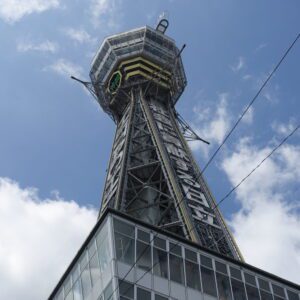
When I went near Tsutenkaku Tower, many people lined up to enter Tsutenkaku Tower. I didn’t go up to Tsutenkaku Tower this time. It costs money to go up to the observatory.
Observatory fee: Adults (high school students and above) Yen 900, children (5 years old to junior high school students) Yen 400
The area around Tsutenkaku Tower is a downtown area, Shinsekai (the New World) that retains the atmosphere of the Showa period. It is a pity that the puffer fish dish “Zuboraya”, which was a symbol of Shinsekai, closed in September 2020 and the large puffer fish lanterns were removed.
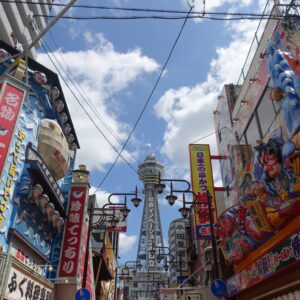
2. Yasui Shrine
I went to Yasui Shrine, which is a little over 5 minutes on foot from Tsutenkaku Tower. Yasui Shrine is the place where Nobushige Sanada (Yukimura Sanada) died during the “summer campaign of the siege of Osaka” in 1615. In the precincts of Yasui Shrine, there is also a monument to the war dead of Yukimura Sanada and a statue of Yukimura Sanada.


3. Shoman-in
I went to Shoman-in, which is a little over 5 minutes on foot from Yasui Shrine. It is also called Aizen-do because its principal image is Ragaraja (esoteric school deity of love). According to the temple, it starts at the Shiyaku-in in Shitennoji, which was opened by Prince Shotoku. The year of foundation is said to be 593.
The Kondo was destroyed by fire in 1615 by “summer campaign of the siege of Osaka”, but in 1618 the Kondo was rebuilt by Hidetada Tokugawa, the second shogun of the Edo Shogunate. The main hall is designated as a tangible cultural property of Osaka Prefecture.
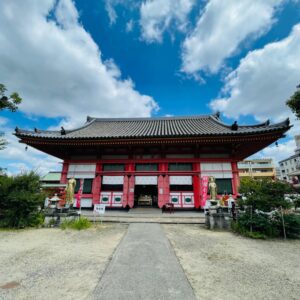
Tahoto is the oldest wooden structure in Osaka city. The Tahoto was rebuilt in 1597 by Hideyoshi Toyotomi. The Tahoto is designated as a national important cultural property. It was a very nicely shaped Tahoto and I was fascinated by it for a while.
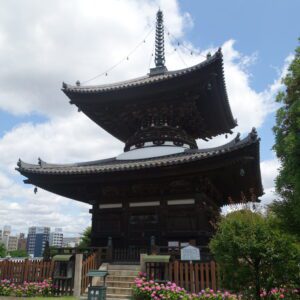
The Aizen Festival, which is a festival of Shoman-in, is one of the Three Great Summer Festivals of Osaka and is an intangible folk cultural property of Osaka City. 2022 will be held for two days, June 30th and July 1st. For the two days of the Aizen Festival, there will be a Gokaicho (special opening of the Ragaraja of the Kondo and the Dainichi Daisho Kongoson of the Tahoto.
4. Shitennoji Temple
I went to Shitennoji Temple, which is less than 10 minutes on foot from Shoman-in. Shitennoji is the head temple of the Washu. It was founded in 593. It is a temple built by Prince Shotoku, like Horyuji Temple in Nara Prefecture. Shitennoji Temple, along with Asukadera Temple in Nara Prefecture, is said to be the oldest full-scale Buddhist temple in Japan. Horyuji Temple was founded in 607.
The arrangement of the cathedrals of Shitennoji is called “Shitennoji style layout of Buddhist temple”. From south to north, the central gate, five-storied pagoda, kondo, and auditorium are lined up in a row. The corridor surrounds the buildings and is considered to be the oldest architectural style.
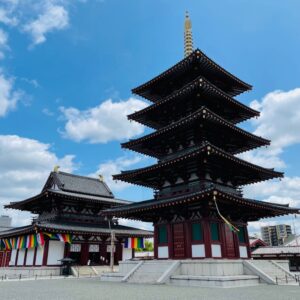
Shitennoji Torii, Ganzandaishido, the stone stage, and Rokujiraisando are national important cultural properties. The stone stage is one of the “Japan’s Three Stages”. The other stages of “Japan’s Three Stages” are Sumiyoshi Taisha and Itsukushima Shrine. I think the stone stage of Shitennoji is the most magnificent of the “Japan’s Three Stages”.
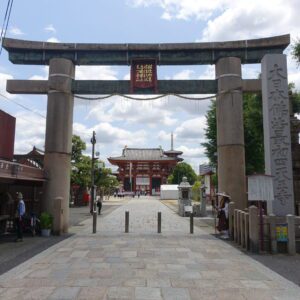
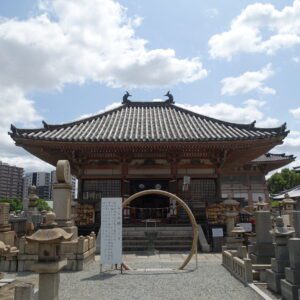

The statue of Nio in the middle gate (Niomon) is made by Horin Matsuhisa and Sorin. The statue of Nio is the second largest statue of Nio at the Nandaimon Gate of Todaiji Temple in Nara Prefecture.
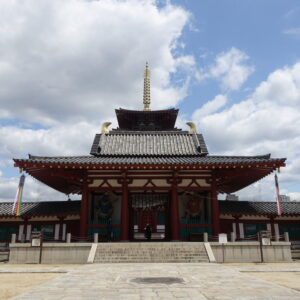
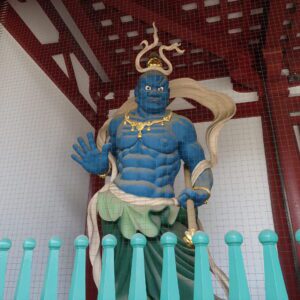
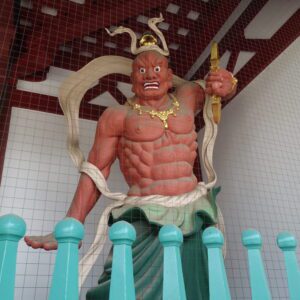
Admission fee (central temple): Adults Yen 300, high school / university students Yen 200, elementary school / junior high school students and younger free
Admission fee (garden): Adults Yen 300, high school / university students Yen 200, elementary / junior high school students Yen 100
Admission fee (treasure hall): Adults Yen 500, high school / university students Yen 300, elementary school / junior high school students and younger free
5. Sumiyoshi Taisha
I went to Sumiyoshi Taisha Shrine after lunch. The transportation I used are as follows.
Depart Tennoji-ekimae Station at 12:06, Hankaidenki-Uemachi Line “bound for Hamadera-ekimae”, arrive at Sumiyoshi-toriimae at 12:22, Fare Yen 230
I didn’t know that there was a tram in Osaka as well. The Hankai Denki Uemachi Line was originally opened as a horse-drawn carriage railroad in 1900 for the purpose of transporting worshipers to Shitennoji Temple and Sumiyoshi Taisha Shrine. It is natural that I felt that the access from Shitennoji to Sumiyoshi Taisha was convenient.
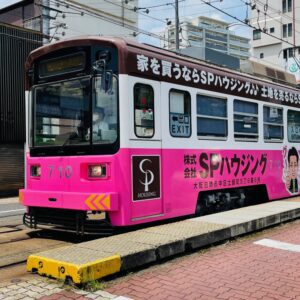
Sumiyoshi Taisha is the head office of Sumiyoshi Shrines nationwide. According to Sumiyoshi Taisha, it was founded in 211. The four main shrines of Sumiyoshi Taisha (first main shrine, second main shrine, third main shrine, fourth main shrine) are national treasures. They were built in 1810. The main shrines have a unique style called “Sumiyoshi-zukuri” and is positioned as the oldest style of the main shrine dating back to the Asuka period (592-710).
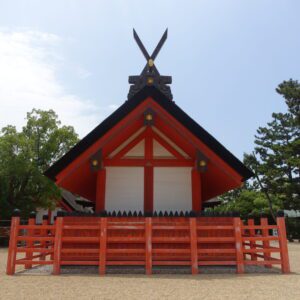
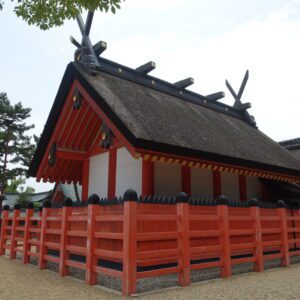
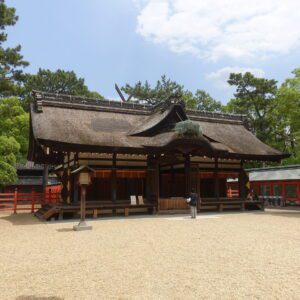

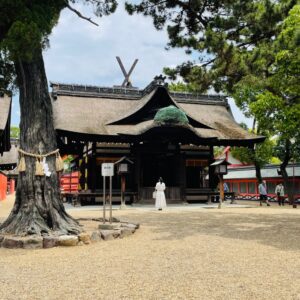
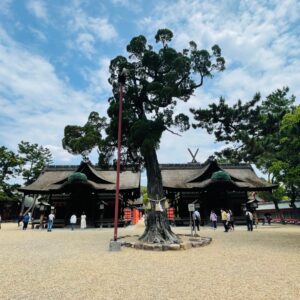
The South Gate and the Gakusho (East and West Gakusho) on both sides are national important cultural properties. Hideyori Toyotomi rebuilt them in 1607.
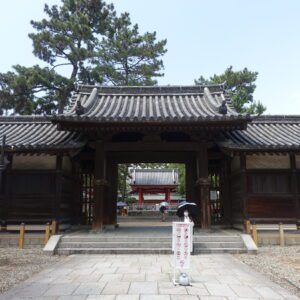
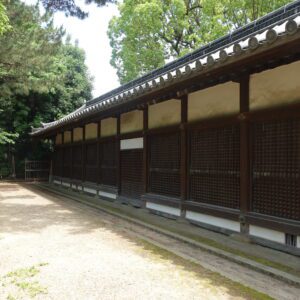
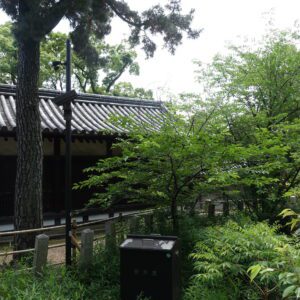
The Ishibutai (stone stage), which was rebuilt by Hideyori Toyotomi, is located near the South Gate and the Tozai Gakusho. Like the stone stage at Shitennoji Temple, it is one of the “Japan’s Three Stages”. However, it is about half the size of the Ishibutai at Shitennoji Temple. The Ishibutai of Sumiyoshi Taisha Shrine is also a national important cultural property.
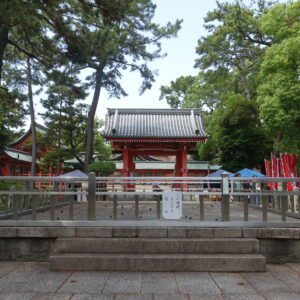
Sorihashi, also called Taiko-bashi, is the symbolic bridge of Sumiyoshi Taisha. The bridge is 4.4 meters high and is not easy to cross.

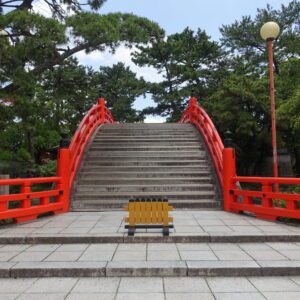
In front of the Koujumon gate is a “Kaku-torii” (square torii). The name “Kaku-torii” comes from its square pillars, and is called “Sumiyoshi-torii” because of its unique form.
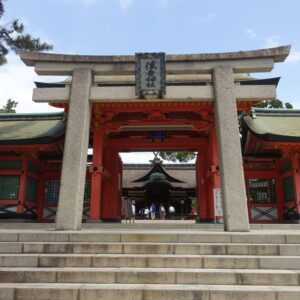
Even though it was a weekday, there were so many people visiting Sumiyoshi Taisha. I could clearly see that Sumiyoshi Taisha Shrine is supported by many deeply religious people.
6. Kanshinji Temple
I headed to Kanshinji Temple after Sumiyoshi Taisha. The transportation I used was as follows.
Depart Sumiyoshi Higashi Station at 13:19, the Nankai Koya Line “bound for Mikkaichi-cho”, arrive at Sakai Higashi Station at 13:26
Depart Sakai-Higashi Station at 13:28, the Nankai Koya Line local express train
“bound for Mikkaichi-cho”, arrive at Kawachi-Nagano Station at 13:47, Fare Yen 450
I rented a bicycle at the Kawachinagano City Tourist Information Center and headed to Kanshinji Temple by bicycle. The rental fee for a bicycle with electric assist was Yen 500 for 3 hours. It took about 15 minutes by bicycle from Kawachinagano Station to Kanshinji Temple.
It is said that Kanshinji was founded by En no Gyōja in 701. After that, it is said that Kukai prayed for the coming of a deity, the Great Dipper in 808.
The Kondo Hall of Kanshinji Temple was built during the Shohei Era (1346 – 1370) and is a national treasure. It is a representative temple of an eclectic mix of Wa-yo, Zenshu-yo, and Daibutsu-yo. Emperor Godaigo, who had great confidence in Kanshinji Temple, issued a decree to build the Kondo with Masashige Kusunoki as the magistrate (around 1334) after the Kenmu Restoration (1334). After that, the present Kondo was completed.


Tatekake-no-to is the first floor portion of the three-story pagoda that was interrupted after it was about to be built. After Masashige Kusunoki started construction of the three-story pagoda, he was killed in the Battle of Minatogawa. Therefore, the construction was halted when the first floor was completed, and the building was converted to a Buddhist temple, which is the Tatekake-no-to. It is registered as a national important cultural property.
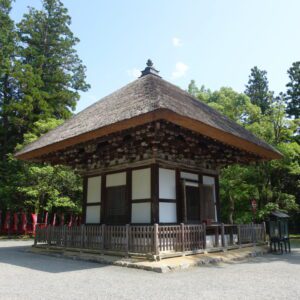
Kanshinji is a family temple of Kusunoki family such as Masashige Kusunoki. The head of Masashige Kusunoki, who died, was delivered to Kanshinji Temple and enshrined in Kubitsuka. I was impressed to be able to visit the land related to the military commander Masashige Kusunoki and Yukimura Sanada, which I liked when I was a child, on the same day.
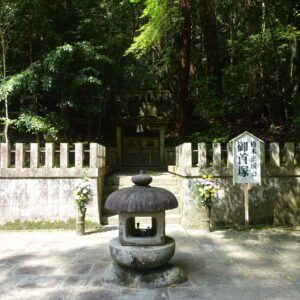
Admission: Adults Yen 300, elementary and junior high school students Yen 100
7. Eboshigata Hachiman Shrine
I went to Eboshigata Hachiman Shrine after Kanshinji Temple. It took about 15 minutes by bicycle to reach Eboshigata Hachiman Shrine.
There was Eboshigata Castle, which is considered to be one of Kusunoki seven castles (Kawachi seven castles) at Mt. Eboshigatayama. It is said that Kojiro Kusunoki entered Eboshigata Castle and created a shrine to protect the castle, which is the beginning of Eboshigata Hachiman Shrine. The main shrine is designated as a national important cultural property.
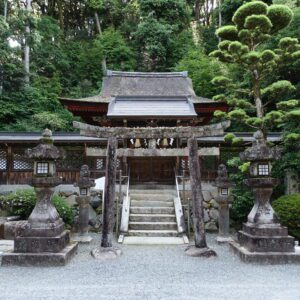
8. Nagano Shrine
As the last sightseeing on June 8, I went to Nagano Shrine near Kawachinagano Station. It is about 5 minutes by bicycle from Eboshigata Hachiman Shrine.
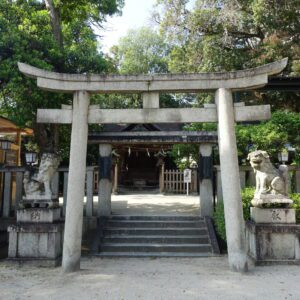
The main shrine of Nagano Shrine is said to have been built around 1543. The main shrine is designated as a national important cultural property. The god of worship is Susanoo-no-Mikoto (Gozu Tenno).
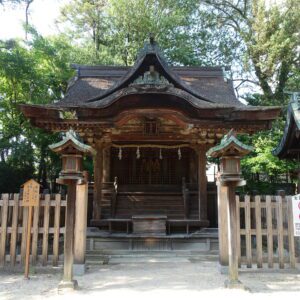
Five shrines, Kumano Miya, Taga Miya, Hachimangu, Kasuga Miya, and Kora Miya, are enshrined together as the subordinate shrine next to the main shrine. It is probably unusual to have five shrines enshrined under one roof. Both the main shrine and the grounds of Nagano Shrine are small and compact.

Note: The departure / arrival times, fares of transportation, admission fees, meal fees, etc. listed in the text are as of the time of writing the BLOG. Please check for yourself when you go on a trip as it may change in the future.